Replace Bathroom Wall Tiles: Ultimate Step-by-Step Guide for Success
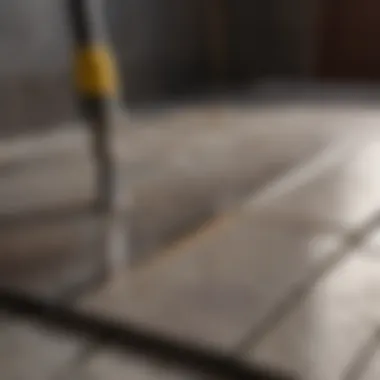
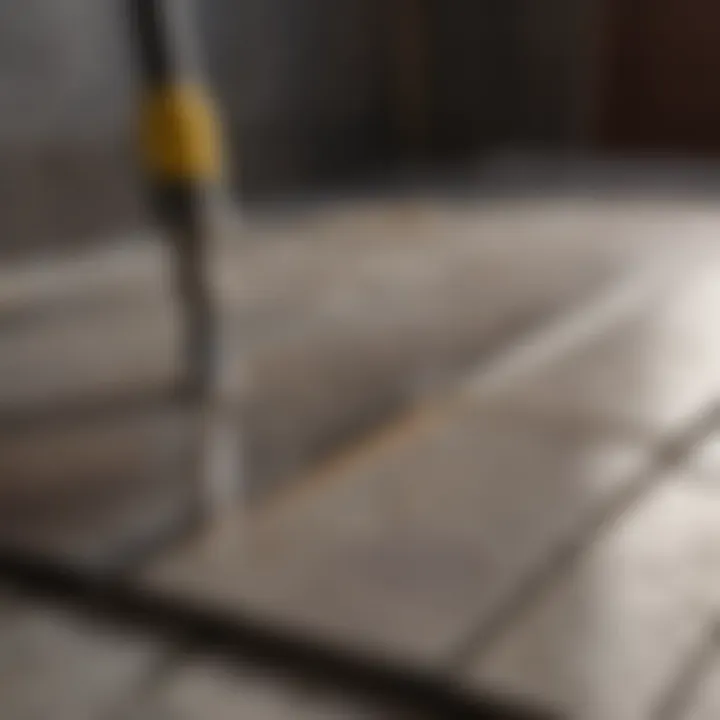
Materials:
- Ceramic bathroom wall tiles (quantity: 50, size: 4x4 inches)
- Tile adhesive (1 gallon)
- Grout (1 gallon)
- Tile spacers (quantity: 100, size: 18 inch)
- Tile cutter
- Notched trowel
- Grout float
- Tile saw
- Level
- Sponge
- Bucket
- Gloves
- Safety glasses
DIY Steps:
- Preparation: Start by removing old tiles using a hammer and chisel, ensuring the wall is clean and smooth.
- Layout: Plan the tile layout using tile spacers and ensure it aligns well with the room's dimensions.
- Adhesive Application: Use a notched trowel to apply tile adhesive evenly on the wall.
- Tile Installation: Press tiles gently into the adhesive, maintaining spacing with tile spacers for a uniform look.
- Grouting: Fill the gaps between tiles with grout using a grout float, wiping off excess grout with a damp sponge.
Technical Aspects:
- Tools: Invest in a quality tile cutter, notched trowel, grout float, and tile saw for precision.
- Timing: Allow adhesive to dry for 24 hours before grouting, ensuring each step has ample time for setting.
- Techniques: Keep tiles level using a spirit level, and use spacers for consistent spacing throughout the installation.
DIY Project Process:
- Measure Twice, Cut Once: Double-check measurements before cutting tiles to avoid mistakes.
- Precision is Key: Ensure tiles are evenly placed and grout lines are straight for a professional finish.
- Troubleshooting Tips: If tiles are not adhering well, apply more adhesive; if grout is too thick, add water and remix.
Introduction
In the realm of home improvement projects, replacing bathroom wall tiles stands out as a task that can truly transform the aesthetics and functionality of a space. Tiles play a pivotal role in not only enhancing the visual appeal of a bathroom but also ensuring durability and ease of maintenance. This comprehensive guide delves into the intricacies of successfully executing a tile replacement project, from meticulous preparation to the final finishing touches. By following the steps outlined in this guide, you can elevate the style and practicality of your bathroom effectively.
Understanding the Importance of Proper Tile Replacement
When embarking on a bathroom renovation journey, proper tile replacement is a crucial aspect that cannot be underestimated. The condition of wall tiles significantly impacts the overall look and feel of the space. Cracked, discolored, or outdated tiles can detract from the aesthetic charm of the bathroom, creating an unappealing environment. By investing time and effort in replacing the tiles with precision and attention to detail, homeowners can rejuvenate their bathrooms, achieving a fresh and modern ambiance. Moreover, ensuring that the replacement process is carried out correctly helps prevent issues such as water damage and mold growth, promoting the longevity of the bathroom infrastructure.
Tools and Materials Required
To undertake a tile replacement project efficiently, it is essential to have the appropriate tools and materials at your disposal. Key tools for this endeavor include tile adhesive spreaders, trowels, grout floats, tile spacers, and tile cutters. Additionally, safety equipment such as gloves, goggles, and dust masks are critical to protect oneself during the demolition and installation phases. When it comes to materials, high-quality tiles suited to the bathroom environment, adhesive suitable for the tile material, grout for filling the gaps, and sealant for finishing touches are indispensable. By using the right tools and materials, homeowners can ensure that the replacement process progresses smoothly, resulting in a professional-looking outcome that enhances the overall appeal of the bathroom.
Preparation
In the realm of bathroom renovations, the importance of proper preparation cannot be overstated. It serves as the foundational stage that sets the tone for the entire process of tile replacement. Through meticulous preparation, one ensures a smooth and successful transition from old to new tiles, guaranteeing durability and aesthetics in the long run. Without adequate preparation, the integrity of the new tiling can be compromised, leading to issues such as uneven surfaces, adhesion problems, and potentially costly rework. Thus, investing time and effort into the preparation phase is paramount for a professional-looking and long-lasting outcome.
As you embark on the journey of replacing bathroom wall tiles, understanding the significance of preparation is key. Some of the specific elements that should be considered during this phase include thorough surface cleaning to remove dirt, grease, and old adhesive residues. Additionally, it is essential to inspect the existing substrate for any signs of damage, such as cracks, mold, or water leakage, as addressing these issues beforehand can prevent future complications. By taking the time to prepare the substrate adequately, you are essentially laying the groundwork for a flawless tile installation process that will stand the test of time.
Removing Existing Tiles
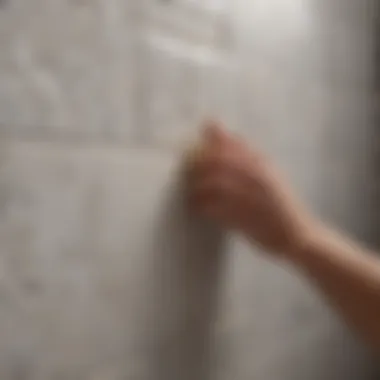
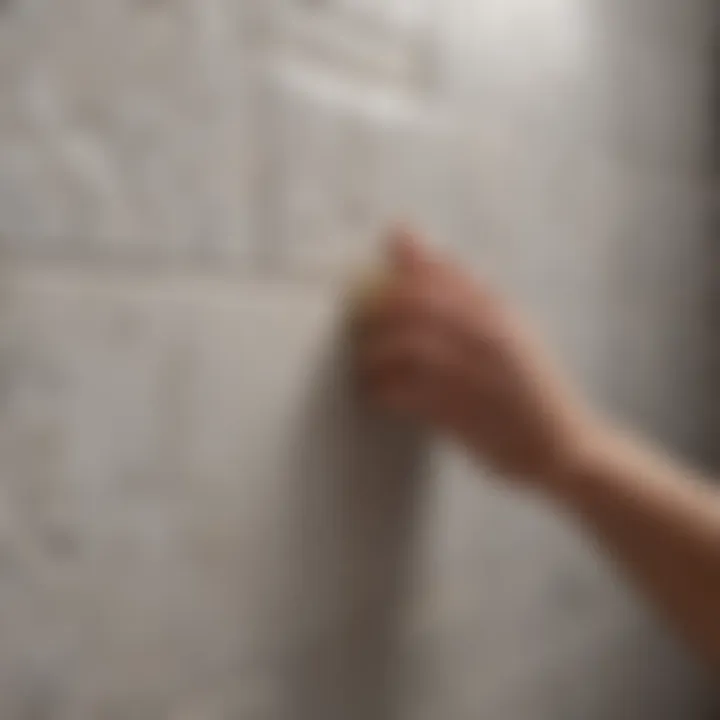
Safety Precautions
When delving into the task of removing existing tiles, safety precautions play a crucial role in ensuring a hazard-free work environment. These measures not only safeguard the individuals performing the tile removal but also protect the surrounding areas from potential damage. By wearing appropriate personal protective equipment (PPE) such as goggles, gloves, and a dust mask, one minimizes the risk of injuries from sharp tile shards and exposure to harmful dust particles.
The key characteristic of safety precautions lies in their proactive nature, as they aim to prevent accidents and mishaps before they occur. By adhering to safety protocols, such as barricading the work area and using warning signs to alert others, one fosters a secure workspace conducive to efficient tile removal. The unique feature of safety precautions is their versatile application across various home improvement projects, making them a valuable choice for the tile replacement process.
Use of Proper Tools
Utilizing the right tools for tile removal is paramount to the success of the project. From tile pry bars and chisels to electric tile removers, each tool serves a specific purpose in efficiently detaching the existing tiles from the wall. The key characteristic of using proper tools is their ability to facilitate smooth and precise tile removal, minimizing damage to the underlying surface.
The unique feature of proper tools lies in their ergonomic design and functionality, which enhances the user's efficiency and productivity. While manual tools offer control and precision in tight spaces, power tools expedite the removal process for larger surface areas. By weighing the advantages of each tool option, one can select the most suitable tools for the job, thereby optimizing the tile removal process for a seamless transition to the next phase.
Surface Inspection and Repair
Checking for Damage
Before proceeding with tile replacement, a thorough inspection of the surface is imperative to identify any existing damage that may impact the new tiles' installation. Checking for damage involves scrutinizing the walls for issues such as moisture seepage, structural cracks, or loose tiles that could compromise the adhesion of the new tiles.
The key characteristic of checking for damage is its preventive nature, as detecting and addressing problems early on can prevent future structural issues and tile failures. By conducting a meticulous inspection, one can pinpoint areas of concern and implement targeted repairs, ensuring a stable and resilient foundation for the new tiles.
Repairing Cracks and Holes
Addressing cracks and holes in the wall is a critical step in preparing the surface for tile installation. By filling cracks with suitable patching compounds and repairing holes with spackling, one achieves a level and uniform surface that promotes proper tile adhesion. The key characteristic of repairing cracks and holes is their transformative effect on the wall's aesthetics and structural integrity.
The unique feature of this repair process lies in its ability to rectify imperfections and create a seamless backdrop for the new tiles. While repairing cracks involves structural reinforcement, patching holes enhances the overall smoothness of the surface, culminating in a visually appealing finish. By meticulously tending to these imperfections, one paves the way for a flawless tile installation that exhibits both beauty and resilience.
Tile Selection
When embarking on the journey of bathroom wall tile replacement, one of the pivotal aspects to consider is the meticulous selection of tiles. The tiles you choose can significantly impact the overall aesthetics, durability, and functionality of your bathroom space. Therefore, investing time and effort in understanding the nuances of tile selection is imperative to achieve a successful outcome.
Choosing the Right Tiles
In the realm of tile selection, there are two key facets that demand your attention - material considerations and design & size factors.
Material Considerations
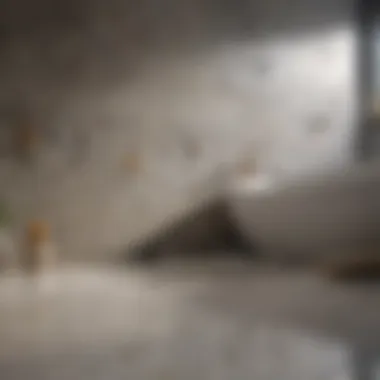
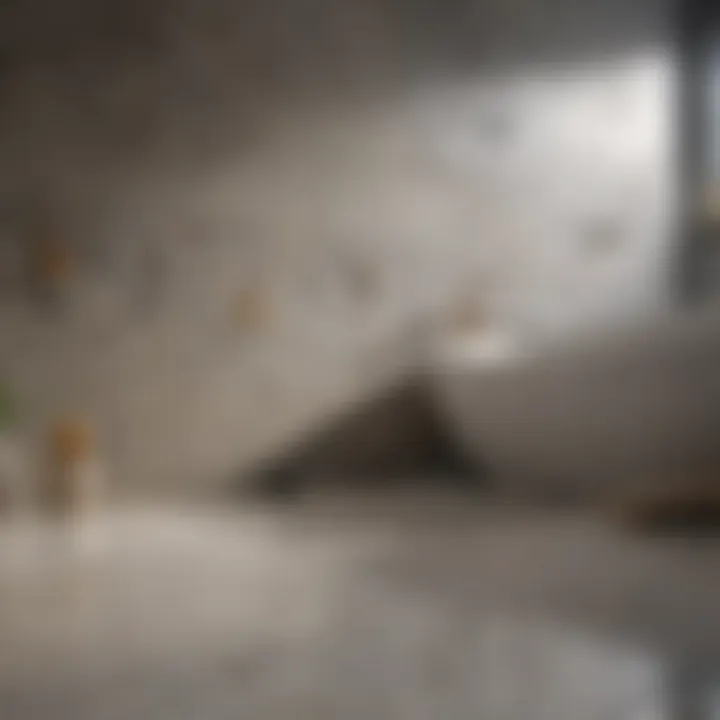
Delving into material considerations is akin to peering into the soul of your bathroom walls. Ceramic, porcelain, glass, natural stone - the array of options can be overwhelming. Each material boasts its own set of unique characteristics, ranging from durability and moisture resistance to aesthetic appeal and maintenance requirements. For instance, opting for ceramic tiles offers a perfect blend of affordability, flexibility in design, and easy maintenance. On the flip side, natural stone tiles exude elegance and timeless charm but may necessitate greater upkeep. The choice of material hinges on striking a balance between functionality, visual allure, and practicality in the context of your bathroom's ambiance.
Design and Size Factors
The design and size of your tiles wield a profound influence on the visual impact of your bathroom walls. Selecting the right design pattern, whether it's intricate mosaics, classic subway tiles, or contemporary large-format tiles, can transform your bathroom into a sanctuary of style. Moreover, considering the size of the tiles is crucial for achieving a harmonious layout and facilitating seamless installation. Larger tiles can create an illusion of space, while smaller tiles lend themselves well to intricate designs and accents. Balancing design aesthetics, spatial constraints, and practical installation requirements is paramount in making an informed decision that aligns with your vision for your bathroom space.
Quantity Estimation
After deliberating on material considerations and design nuances, the next step in the tile selection process is estimating the quantity of tiles required for your project. Accurate estimation is vital to prevent shortages or wastage, ensuring a smooth progression from selection to installation. Calculating the quantity of tiles involves measuring the surface area to be tiled, factoring in tile size, grout lines, and potential wastage. Additionally, it's prudent to consider purchasing a margin of extra tiles to account for cuts, breakages, and future repairs, guaranteeing a seamless and hassle-free tile selection and installation process.
Installation
When it comes to installing bathroom wall tiles, attention to detail is paramount. The installation process not only enhances the aesthetics of the space but also ensures durability and functionality in the long run. Proper installation guarantees that the tiles adhere securely to the wall, preventing any issues such as loose tiles or water damage. Each step in the installation phase contributes significantly to the overall outcome of the project.
Applying Adhesive
Correct Mixing Techniques
Correct mixing of the adhesive is crucial for the successful application of bathroom wall tiles. By achieving the right consistency, you ensure a strong bond between the tiles and the wall surface. This process involves combining the adhesive powder with water in precise ratios to create a uniform mixture. The correct mixing technique prevents air pockets, which could lead to uneven adhesion. A well-mixed adhesive simplifies the application process, making it easier to work with and ensuring a secure fixing of the tiles.
Uniform Application
Uniformly applying the adhesive on the back of each tile is essential for consistent adhesion. A uniform layer of adhesive guarantees that the tile sits flush against the wall, reducing the risk of any gaps or uneven surfaces. This technique provides stability and support to the tiles, minimizing the chances of displacement over time. The uniform application of adhesive not only facilitates a smooth installation but also enhances the overall look of the tiled surface.
Placing and Securing Tiles
Alignment
Achieving precise alignment while placing bathroom wall tiles is crucial for a visually appealing result. Proper alignment ensures that the tiles are evenly spaced, creating a seamless and professional finish. Attention to detail during alignment prevents pattern irregularities and misplacement, maintaining the overall aesthetic of the tiled surface. Precise alignment contributes to a clean and polished look, reflecting the care and precision put into the installation process.
Grouting
Grouting plays a vital role in securing the tiles in place and providing a finished look to the installation. It not only fills the gaps between tiles but also reinforces the structure, preventing water seepage and enhancing durability. Properly applied grout helps in maintaining the cleanliness of the tiled surface by sealing out moisture and dirt. Choosing the right grout color can also impact the overall visual appeal of the tiled area, complementing the tile design and tying the look together seamlessly.
Finishing Touches


Finishing touches play a crucial role in the final outcome of replacing bathroom wall tiles. After the tiles are properly installed, attention to detail in cleaning and sealing is paramount to ensure a polished and long-lasting finish. Cleaning the grout is an essential step that involves removing any residue or excess grout from the tile surface. This process not only enhances the appearance of the tiles but also prevents mold and mildew buildup, promoting a healthier bathroom environment. Proper sealing of the tiles further protects them from moisture penetration, reducing the risk of water damage and prolonging the lifespan of the tiled surface. By meticulously addressing these final touches, homeowners can admire a pristine and professionally finished bathroom space.
Cleaning and Sealing
Grout Cleaning
Grout cleaning is a critical aspect of maintaining the aesthetics and hygiene of bathroom wall tiles. The meticulous removal of grout residue ensures a seamless and uniform finish across the tiled surface. This practice significantly reduces the chances of discoloration and ensures that the tiles maintain their original appearance over time. By utilizing specific grout cleaning products and tools, homeowners can effectively eliminate any stains or debris, enhancing the overall cleanliness of the tiled area. The thoroughness of grout cleaning not only improves the visual appeal of the tiles but also contributes to a healthier and more sanitary bathroom environment by preventing the growth of harmful bacteria and mold.
Sealing the Tiles
Sealing the tiles is a key step in protecting the tiled surface from moisture and stains. By applying a quality sealer, homeowners can create a protective barrier that repels water and safeguards the tiles against spills and splashes. This sealing process not only enhances the durability of the tiles but also simplifies maintenance by making it easier to clean and maintain the surface. Additionally, sealed tiles are less susceptible to damage from daily use and are more resistant to discoloration over time. The application of a sealant offers long-term benefits by preserving the beauty and integrity of the tiled walls, ensuring a lasting and appealing finish for years to come.
Final Inspection
Completing the tile replacement project with a thorough final inspection is crucial to validate the quality of work and identify any potential issues. During this stage, homeowners should carefully examine the tiled surface for any irregularities or deficiencies, ensuring that all tiles are securely in place and properly aligned. Inspecting the grout lines for uniformity and completeness is also essential to guarantee a professional finish. Any imperfections or discrepancies should be promptly addressed to achieve a flawless result. By conducting a meticulous final inspection, homeowners can rest assured that their bathroom wall tiles have been successfully replaced with precision and care, culminating in a visually stunning and durable renovation.
Maintenance Tips
Maintaining your new bathroom wall tiles is crucial to ensure their longevity and keep them looking pristine. By following proper maintenance tips, you can preserve the beauty of your tiles for years to come. Regular cleaning and avoiding damaging agents are key practices in tile maintenance.
Caring for Your New Tiles
Regular Cleaning
Regular cleaning is an essential aspect of keeping your bathroom wall tiles in top condition. It involves routine cleaning using mild, non-abrasive cleaners to remove dust, dirt, and soap residue. Regular cleaning helps prevent the build-up of grime and maintains the appearance of your tiles.
Regular cleaning not only enhances the aesthetics of your bathroom but also contributes to a hygienic environment. By cleaning your tiles regularly, you eliminate bacteria and mold growth, promoting a clean and healthy space for you and your family.
One of the key characteristics of regular cleaning is its simplicity and effectiveness. It is a cost-effective and convenient way to uphold the appearance of your tiles without requiring any specialized equipment or professional assistance.
The unique feature of regular cleaning is its ability to prolong the lifespan of your tiles. By removing dirt and stains promptly, you prevent permanent damage and extend the durability of your tiles, ensuring they look as good as new for years.
Avoiding Damaging Agents
Avoiding damaging agents is another essential practice in tile maintenance. These agents include harsh chemicals, abrasive cleaners, and acidic substances that can degrade the quality of your tiles over time. By steering clear of damaging agents, you safeguard the longevity and appearance of your tiles.
The key characteristic of avoiding damaging agents is its preventive nature. By being proactive and choosing gentle, tile-friendly cleaners, you prevent unnecessary wear and tear on your tiles, preserving their integrity for years to come.
Choosing to avoid damaging agents aligns with the ethos of this article, which emphasizes efficient and long-lasting tile replacement. By exercising caution in the products you use for cleaning, you ensure that your new tiles retain their beauty and functionality without succumbing to premature damage.
The unique feature of avoiding damaging agents lies in its protective quality. By prioritizing gentle cleaning solutions and avoiding corrosive chemicals, you uphold the vibrancy and structural integrity of your tiles, maintaining a visually appealing and durable surface in your bathroom.







